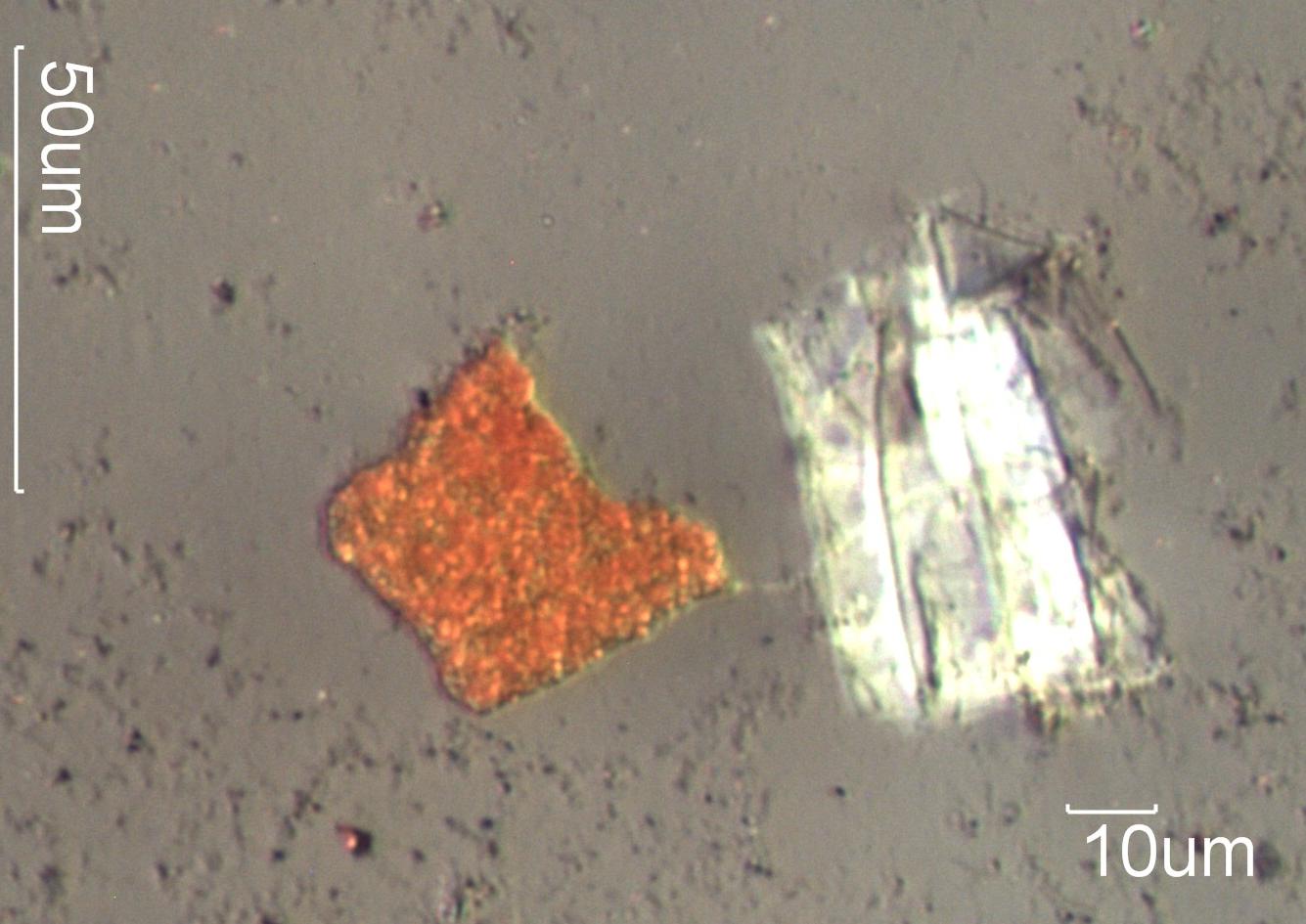Limonite and Paper
This is an image of particles from a transformer oil sample. The orange particle is limonite and the white particle is degraded, end-of-life paper. There is also a small copper arc particle below the limonite particle. This transformer has corroding iron, degraded paper insulation, and some arcing involving copper. The arcing event was fairly low in energy as indicated by the small size of the arc sphere.
Definition/Function:
The paper insulation has reached end-of-life when the tensile strength of the individual paper fibers decreases to the point that it is below the strength of the bond between fibers in the paper insulation. At that point the paper "powders" as is the case with this paper particle.
Limonite is the first form of iron corrosion product evident in a corroding transformer. It is an iron hydroxide with waters of hydration. The initial form is pale yellow in color. As waters of hydration are lost it becomes more orange and will eventually become hematite (Fe2O3). This limonite particle shows the nucleation of crystal sites. It has released water and hydrogen back into the system.
Copper arcing spheres are generated when an arc is discharged in the transformer under the cover of oil. It is the result of molten copper being formed by the arc and ejected into the oil by the rapid thermal expansion of the metal under the molten metal. The size of the arc particle is an indication of the strength of the arc.
Significance in the Environment:
The paper insulation is in jepardy when these powdered paper particles appear in the oil sample.
Free water is accumulating on the surface of sheet iron and is corroding the iron. Growth of crystal sites in the limonite film indicate that this has been occuring for at least many months.
There is some low level arcing going on in this transformer as indicated by the small arc sphere.


